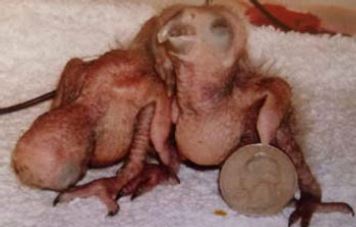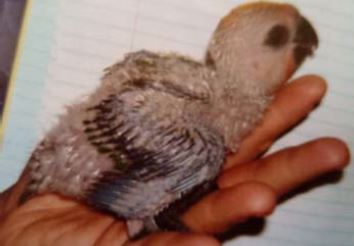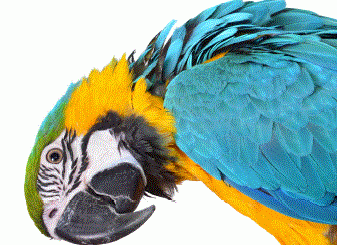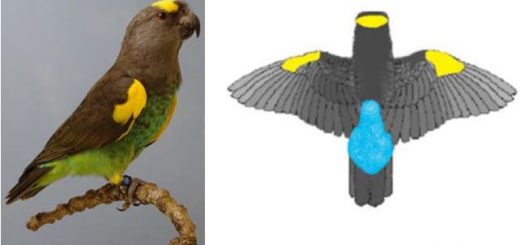Jenday Conures: Breeding Advice, Caring, Tips
Jenday Conures: Aratinga jandaya
IN THIS BLOG POST
Breeding Jenday Conures can be a rewarding experience, but it requires careful planning and understanding of the birds’ needs. Here are some important considerations and steps to take when breeding Jenday Conures.
Introduction to Jenday Conures
Jenday Conures are beautiful bird, distinguishing itself by its bright colours rivalled only by its cousin, the Sun Conure. In fact, Jendays look very similar to Sun Conures, except that the wings of the Jenday are almost all green, other than the primary flight feathers, which are blue.
They have a reddish orange body, green wings, vent, and tail, yellow head, neck, and shoulders, orange cheeks, black bill, whitish eye and dark eyes. The ends of the tail feathers are tinged in blue. In my opinion the Jenday is one of the most beautiful conure species out there. The Jenday is a member of the Aratinga genus, which includes the Sun, Gold-capped, Orange-fronted, Blue-crowned and Mitred conures; all charismatic, amiable, and attractive birds. Here is a link to the top 10 Conures kept as pets.
The Aratinga conures make great companions for someone wanting a large bird, but without the space to actually keep one. What these conures lack in bulk, they make up for in personality, intelligence, and affection.
Jenday Conures description
The Jenday Conure is considered to be a small long-tailed parakeet. It measures 30 cm in length and weighs around 125-140 gm.
The Jenday Conure naturally occurs in north-eastern Brazil. It has an extremely large range in the states of Piaui, Maranhao, Tocantins, and Ceara, and portions of Para. It is found in lowland deciduous woodland and palm groves.
Aviary Size
Conures are destructive and should be housed in a cage that can contain them. Jenday Conures should be housed in cages made from mesh 13 mm x 25 mm. The chances of them hanging themselves will be great, as the birds will push their heads through one opening and try to retract it through the next opening, effectively hanging themselves.
Conures will breed in small cages. I have seen collections where Jenday Conures were bred in cages a mere 60 cm square, but the objective should be in providing adequate housing to ensure long term success. In small cages, the reproductive life will be shortened as they will not have the ability to exercise properly.
We have seen Jendays successfully bred in cages ranging from 1.8 to 3.6 m. Not only are the birds able to fly, but watching them as they move back and forth proves far more enjoyable. The cage width should be sufficient to allow the wings to be opened without the ends touching the cage sides.
Breeding nest box
Jendays are very prolific breeders. They will breed at any time, but the conditions must be right.
Conures in the wild nest in tree cavities, rock walls or in arboreal termite mounds. In captivity all conures will utilize a nesting box, though the structure and size will need to be varied depending on the species. In general I offer the smaller conures like the Jenday an L-shaped and a grandfather type situated horizontally.
If using the grandfather type nest box, try to place half a subdivision in order to reduce the amount of light reaching the bottom. All conures like dark nesting chambers.
The nests are filled with wood for them to chew, as the time needed to reduce the wood to slivers and the darkness of the nest seems to induce ovulation. Nest depths should average around 45 cm. All nests have an inspection door and a ladder leading to the nesting chamber.
Breeding


Conures tend to be excellent parents. If we intend to hand-rear the young, we remove them at around 2 weeks of age. By then hand-rearing will prove to be a very easy process.
Hand-reared or parent-reared young are equally good breeders. If the birds are intended for breeding, we do try to keep them in flocks, even if these may not consist of the same species. Flocking allows them to display natural behaviours, which I find improves breeding results when they are finally paired.
Jendays can breed up to four times a year. To promote this, you must pull the babies from them after a few weeks and begin handfeeding. Fortunately, this is fairly easy, as Jendays are easy to hand feed. It usually takes 0 weeks to wean a Jenday baby.
If you let the parents do most of the care, you can reduce this to 7 weeks. During this time you try and handle the bird as often as possible, to get the babies used to human interaction if you are planning to sell them as pets.
Jendays are a little difficult to sex. It is recommended that a DNA test be performed to ensure you have a pair. Also make sure that you do not get a hybrid conure. Hybrids are those that were bred between a Jenday and a Sun Conure, producing a Sunday Conure. They will not breed well with a pure Jenday.
Jendays are ideal for someone that is new when it comes to breeding birds, but what is great is that their demand as pets will ensure a good market for your babies, so that when you breed your birds, you will have little difficulty in selling them, especially hand reared babies.
Feeding Jenday Conures
Diet is key to success. I am always surprised when I visit an aviary and success is evasive. All I have to do is glance at the food bowl for the answer: a diet comprised of sunflower seed supplemented periodically with a bit of apple or orange is woefully inadequate.
The birds may eventually breed, but real success will never be achieved. An ideal diet for breeding Jendays should be a diet comprised of a broad assortment of seeds or alternatively pellets, considerable amounts of fruits and vegetables and soft food. Sprouted seed is offered daily.
Food is offered in amounts sufficiently small to ensure that everything is eaten but not in such inadequate levels that the birds go hungry.
In trails using Jendays, I found that pairs fed only a mixed seed diet (sunflower, safflower, corn, millet, oats, etc.) or pellets, did not reproduce as well. In three pairs of each setup in trails, the pairs whose diet was enriched with fruits, vegetables, sprouts, and more, bred 53% more prolifically than those fed on pellets alone, and 61% more than those fed only on seeds. Clearly variety is key to success.
| Summary Info-Table |
| Name: |
| Jenday conure |
| Scientific name: |
| Aratinga jandaya |
| Also known as: |
| Jandaya parakeet |
| Distribution: |
| Native to wooded habitats in North Eastern Brazil. |
| Male/Female: |
| Males and females have an identical external appearance. |
| Life Expectancy: |
| Can live 30 years in captivity. |
| Nest box: |
| Vertical box 12” x 12” x 22” (30.5cm x 30.5cm x 55.9cm). |
| Clutch: |
| Lays three to six eggs. |
| Incubation: |
| Incubates for roughly 26 days. The young are fed by both parents and fledge after two months. |
| More info: Known for their intelligence, and can be trained to perform pet-like behaviors. These small parrots can often learn to mimic sounds including words and even phrases. |
Conclusion
In summary, Jenday Conures can be noisy, but their active, playful behaviour, willingness to breed and beauty, justifies that they be given more attention. By following these guidelines, you can create a healthy and supportive environment for breeding Jenday Conures. If you have any specific questions or concerns, feel free to ask!
By: Rolf Dennison
Common Jenday Conures Questions:
Do Jenday Conures talk?
Jenday Conures are not known for their talking ability as much as some other parrot species, such as African Grey Parrots or Budgerigars. However, they can learn to mimic a few words or phrases with practice and patience. Here are some points to consider regarding the talking abilities of Jenday Conures:
Talking Ability
- Vocabulary: Jenday Conures can learn to say a small number of words or short phrases. Their vocabulary is generally limited compared to more proficient talking parrot species.
- Clarity: The clarity of their speech may not be as distinct as that of other parrots. Words may be less clear and more challenging to understand.
- Imitation: Besides speech, Jenday Conures are good at mimicking sounds, such as whistles, household noises, and even other animals.
Encouraging Talking
- Repetition: Repeatedly expose your Jenday Conure to the words or phrases you want them to learn. Consistent repetition can help reinforce their learning.
- Positive Reinforcement: Use treats and praise to reward your conure when they successfully mimic a word or sound.
- Interactive Environment: Engage in regular interaction with your conure. Talking to them frequently and providing a stimulating environment can encourage vocalization.
- Patience: Be patient, as learning to talk can take time. Not all Jenday Conures will talk, but many can learn to communicate in their own way.
Communication
Even if they don’t talk, Jenday Conures are excellent communicators through body language and vocalizations. They can express a range of emotions and needs, making them engaging and social companions.
Overall, while Jenday Conures are not the best talkers among parrots, they can still be trained to say a few words and are known for their lively and playful personalities.
Where to Adopt or Buy a Jenday Conure
Online rescues, adoption organizations, and breeders where you can find Jenday Conures include:
More Bird Species and Further Research
If you’re interested in similar species, check out:


